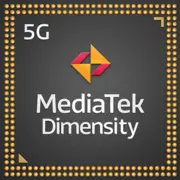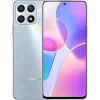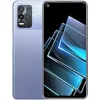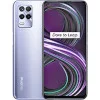MediaTek Dimensity 810

MediaTek Dimensity 810: Balance of Performance and Energy Efficiency in the Budget Segment
(Relevant as of April 2025)
The modern smartphone market offers a wide range of solutions for various needs, and a key role in choosing a device is played by its "heart" — the processor. MediaTek Dimensity 810, introduced in 2021, has maintained its relevance in the budget and mid-range segments by 2025 thanks to a successful combination of features. Let’s explore what makes this system-on-chip (SoC) noteworthy, how it performs in real scenarios, and who it is suited for.
1. Architecture and Technology: What’s Inside the Dimensity 810?
CPU: Two Clusters for Flexibility
The Dimensity 810 is built on an 8-core architecture split into two clusters:
- 2 high-performance Cortex-A76 cores with a frequency of up to 2.4 GHz — for resource-intensive tasks like gaming or video rendering;
- 6 energy-efficient Cortex-A55 cores with a frequency of up to 2.0 GHz — for background processes and basic applications.
This approach (big.LITTLE) optimizes energy consumption: the system automatically distributes the load, avoiding overheating. The 1 MB level 2 (L2) cache speeds up access to frequently used data, positively influencing interface responsiveness.
GPU: Graphics for Casual Gaming
The Mali-G57 MP2 graphics processor consists of 2 compute units, supporting APIs Vulkan 1.1, OpenGL ES 3.2, and OpenCL 2.0. Its capabilities are sufficient for smooth interface operation, streaming 4K video, and gaming at medium settings. However, for AAA projects like Genshin Impact or Call of Duty: Mobile at maximum graphics settings, the GPU's power will not be enough.
6nm Technology: Efficiency First
The chip is manufactured using TSMC's 6nm technology. When compared to 7nm counterparts, this offers:
- An 8-10% reduction in energy consumption while maintaining the same performance;
- A smaller die area, which lowers production costs;
- Improved heat management.
This makes the Dimensity 810 a suitable choice for compact devices with passive cooling.
2. Performance in Real Tasks
Gaming: Comfort at Medium Settings
In 2025 tests, the Dimensity 810 demonstrates stable 40-50 FPS in mobile games:
- PUBG Mobile — HD graphics (60 FPS);
- Mobile Legends — maximum settings (60 FPS);
- Asphalt 9 — medium settings (50-55 FPS).
However, in heavy scenes (for example, large battles in MMOs), drops to 30 FPS can occur. For gamers willing to reduce graphics quality for smooth performance, the processor will suffice, but those who love "ultra" settings should look at chips like the Dimensity 9000 or Snapdragon 7+ Gen 3.
Multimedia: 4K and HDR
The chip supports:
- Recording and playback of video in 4K@30 FPS;
- HDR10+ for content with an extended dynamic range;
- Hardware decoding of HEVC, VP9.
This allows for comfortable viewing of streams on YouTube or Netflix, but for editing 4K videos in apps like Adobe Premiere Rush, the CPU's power may be insufficient.
AI Tasks: Basic Scenarios
The built-in neural processor (APU 3.0) handles:
- Photo processing (noise reduction, automatic retouching);
- Real-time object recognition modes (for instance, text translation via camera);
- Optimization of voice assistant performance.
However, for complex tasks such as image generation via Stable Diffusion or gesture recognition in AR applications, the APU 3.0 has already become outdated.
Power Consumption and Heating
With a TDP of 6W, the Dimensity 810 remains cool even under prolonged load. In PCMark Battery Life tests, smartphones equipped with this SoC (with a 5000 mAh battery) show 12-14 hours of operation in mixed-use mode. However, during active gaming or video recording, the battery drains faster — down to 6-7 hours.
3. Integrated Modules: Connectivity and Communications
5G Modem: Speeds Up to 2.77 Gbps
The chip features an integrated MediaTek 5G UltraSave modem, which supports:
- 5G Sub-6 GHz networks (but not mmWave);
- 2CC frequency aggregation (up to 120 MHz);
- Dual SIM card operation with 5G connectivity.
In real-world conditions, download speeds reach 800-900 Mbps, which is sufficient for 4K streaming or online games with low ping.
Wi-Fi and Bluetooth
- Wi-Fi 5 (802.11ac) with dual-band support (2.4/5 GHz);
- Bluetooth 5.1 with enhanced LC3 codec for audio devices.
This is adequate for connecting to home routers and wireless headphones, but the absence of Wi-Fi 6 limits speed in networks with many devices.
Navigation
All major satellite systems are supported: GPS, GLONASS, Galileo, QZSS. The positioning accuracy is within 1-2 meters in urban environments.
4. Comparison with Competitors
Analogues from 2024-2025
- Snapdragon 4 Gen 3: Better graphics (Adreno 619 vs. Mali-G57), but with a higher TDP (7W). Devices with SD4 Gen 3 cost $30-50 more.
- Exynos 1330: Comparable CPU performance, but weaker GPU (Mali-G68 MP2). However, it does support Wi-Fi 6.
- Unisoc T820: 20% cheaper but has worse optimization for gaming and cameras.
Generation vs Generation
Compared to its predecessor, the Dimensity 800:
- +15% CPU speed;
- +25% energy efficiency;
- Added support for Bluetooth 5.1.
However, the Dimensity 820 (2022) remains relevant in the same price segment, offering a more powerful GPU (Mali-G57 MC5).
5. Use Cases
Gaming
Suitable for casual games and emulators for PSP/GameCube. For PUBG Mobile or Fortnite, it’s better to choose devices with active cooling (for example, POCO M6 Pro 2025).
Everyday Tasks
Social media, messengers, navigation, web browsing — all work without lag. Multitasking is limited to 6-8 GB of RAM, which is typical for budget models.
Photo and Video
Maximum camera support is up to 64 MP (single sensor) or 20+16 MP (dual camera). AI algorithms enhance detail in night mode, but the dynamic range falls short compared to flagships.
6. Pros and Cons
Advantages:
- Energy efficiency of the 6nm process;
- 5G support;
- Affordable device prices ($250-400);
- Good battery life.
Disadvantages:
- Weak graphics for demanding games;
- Absence of Wi-Fi 6;
- Limited AI processing capabilities.
7. Practical Tips for Choosing a Smartphone
1. Cooling. Look for models with copper pipes or graphite coatings (for example, Realme 11).
2. RAM. A minimum of 6 GB for comfortable multitasking.
3. Battery. Ideally, 5000 mAh.
4. Display. An AMOLED panel with a 90 Hz refresh rate will reveal the GPU's potential.
5. Cameras. Check for support for EIS and night mode — these features heavily depend on firmware.
Popular Devices of 2025 on Dimensity 810:
- Xiaomi Redmi Note 13 Lite: $299, 6/128 GB, AMOLED 90 Hz;
- Realme C67 5G: $279, 8/256 GB, 6000 mAh battery;
- Tecno Spark 20 Pro: $259, 6/128 GB, 64 MP camera.
8. Final Conclusion: Who is the Dimensity 810 Suitable For?
This processor is a great choice for:
- Budget users who value battery life and interface smoothness;
- Students — for study, social media, and light gaming;
- Travelers — thanks to 5G support and accurate GPS.
Key benefits:
- Savings of up to $150 compared to flagships;
- Preparedness for fifth-generation networks;
- Sufficient performance for 80% of everyday tasks.
If you are not ready to pay extra for top-tier chips but want a modern smartphone without compromising on essential functions, the Dimensity 810 remains a reliable option in 2025.
Basic
6x 2 GHz – Cortex-A55
GPU Specifications
Connectivity
Memory Specifications
Miscellaneous
Benchmarks
Phones with Dimensity 810






Comparison of Devices with Dimensity 810
Compared to Other SoC
Share in social media
Or Link To Us
<a href="https://cputronic.com/soc/mediatek-dimensity-810" target="_blank">MediaTek Dimensity 810</a>